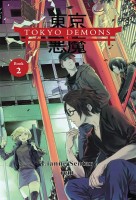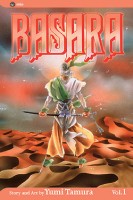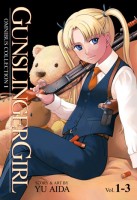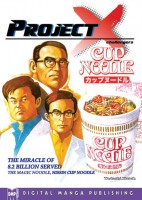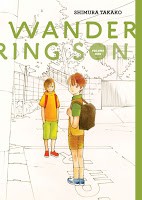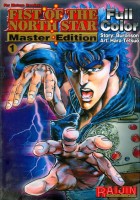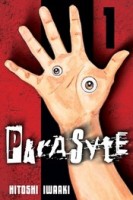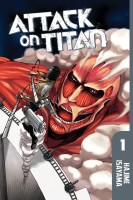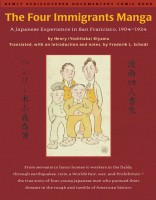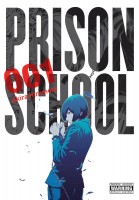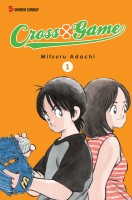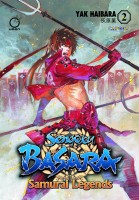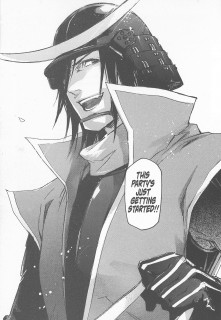 Creator: Heldrad
Creator: Heldrad
Publisher: Chromatic Press
ISBN: 9781987988031
Released: July 2015
Orange Junk, created by Mexican artist (and architecture student) Heldrad, is an ongoing comic series strongly influenced by shoujo manga. The series had its beginnings back in 2010 and eventually became one of the most well-loved comics hosted online at Inkblazers (previously known as Manga Magazine). Sadly, Inkblazers closed in early 2015. Happily, Orange Junk was quickly picked up by the publisher Chromatic Press to be featured in its online multimedia magazine Sparkler Monthly. And now, less than a year later, the first volume of Orange Junk has been collected and released both digitally and in print. While I was vaguely aware of Orange Junk before its debut in Sparkler Monthly, I didn’t have any extensive knowledge about its plot or characters. (Really, I recognized it more by name than anything else.) However, the release of the collection of the first four chapters and additional bonus content provided the perfect opportunity to be introduced to the unabashed shoujo delight that is Orange Junk.
Louise Barton is the oldest child of a family that at one point was very wealthy. She lived in comfort, had plenty of time and opportunity to pursue her hobbies, and was generally happy and content with her lot in life. But then her father’s company went bankrupt and her family is now struggling to pay back the debt and make ends meet. Louise, her younger brother, and both of their parents are still adjusting to their new circumstances. One of the greatest challenges for Louise is that she must attend a public school for the first time. Starting over as a transfer student, she has no friends and an unfortunate lack of academic aptitude. Not to mention that she’s also already managed to get on the bad side of Bruce Daniels, a classmate notorious for his temper and getting into fights. But not everything is bad in the eleventh grade. Andrew Grey, another transfer student and one of the cutest guys in the school, is in her class, too. And when the three of them get thrown together, things take an unexpected turn or two.
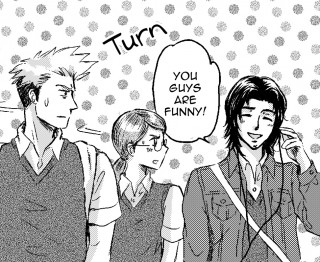 Out of all of the stories that have so far appeared in Sparkler Monthly, Orange Junk is the one that is probably the most stereotypically “shoujo,” except that in most cases Heldrad has deliberately taken frequently found tropes and stereotypes and given them a bit of twist. This is especially apparent in the characterizations of the series’ lead trio. Bruce is athletic and constantly getting into fights, but he’s also the smartest student in class. Drew may have the looks that make many of the girls swoon, but he’s also a complete airhead (with occasional moments of wisdom) and an otaku to boot. Almost everyone assumes that Louise has great connections and great grades, but her social life is lacking and she’s absolutely terrible at math. Even the underlying drama of the comic—Louise’s family losing their wealth and status—seems to be less commonly seen than a downtrodden heroine suddenly coming into a fortune of some sort. Orange Junk isn’t necessarily a shoujo manga parody, but it does approach being one at times. Either way though, the comic is very funny.
Out of all of the stories that have so far appeared in Sparkler Monthly, Orange Junk is the one that is probably the most stereotypically “shoujo,” except that in most cases Heldrad has deliberately taken frequently found tropes and stereotypes and given them a bit of twist. This is especially apparent in the characterizations of the series’ lead trio. Bruce is athletic and constantly getting into fights, but he’s also the smartest student in class. Drew may have the looks that make many of the girls swoon, but he’s also a complete airhead (with occasional moments of wisdom) and an otaku to boot. Almost everyone assumes that Louise has great connections and great grades, but her social life is lacking and she’s absolutely terrible at math. Even the underlying drama of the comic—Louise’s family losing their wealth and status—seems to be less commonly seen than a downtrodden heroine suddenly coming into a fortune of some sort. Orange Junk isn’t necessarily a shoujo manga parody, but it does approach being one at times. Either way though, the comic is very funny.
In the author’s notes, Heldrad explains why the series is named Orange Junk. “Orange” because it conveys a sense of energy and “junk” because the comic is akin to junk food. It’s a title that actually fits the series quite well. Orange Junk is fantastically energetic and the chemistry between its characters is great. Louise and Bruce’s interactions are particularly entertaining to watch. They both have strong personalities that frequently clash with each other—Louise is one of the few people who can actually stand up to Bruce—but they begin to establish an awkward sort of friendship over the course of the comic that is absolutely adorable. Ultimately, Orange Junk is a romantic comedy that’s not to be taken too seriously. Although many of the relationships evolve naturally, the comic has its fair share of silliness and melodrama, and there are plenty of developments that inspire incredulity. But that’s really all part of Orange Junk‘s charm. If the first volume is any indication, the rest of the series should be a tremendous amount of fun.

